There are over 100 species of kingfisher worldwide, but only the common kingfisher, Alcedo atthis, breeds in the UK. With it's stunning azure and copper plumage, the kingfisher is an unmistakable bird when spotted, even if it's only glimpsed as it flies by. Additionally, it has a very distinctive call.
Here is our expert guide to kingfishers, including species facts, where to see and how to capture on camera.
How does a kingfisher catch its prey, and what does it eat?
If you’re lucky enough to see a kingfisher on its perch, watch it closely. Once it has spotted its prey a kingfisher will bob its head up and down to gauge the position of the fish.
The bird then dives into the water with its wings open, and its eyes protected by transparent eyelids. Once the fish is caught, it is taken back to the perch where the kingfisher usually stuns it before swallowing it head first.
The prey of kingfishers mostly consists of fish, usually minnows and sticklebacks. However, kingfishers will also eat freshwater insects and shrimps, and tadpoles.
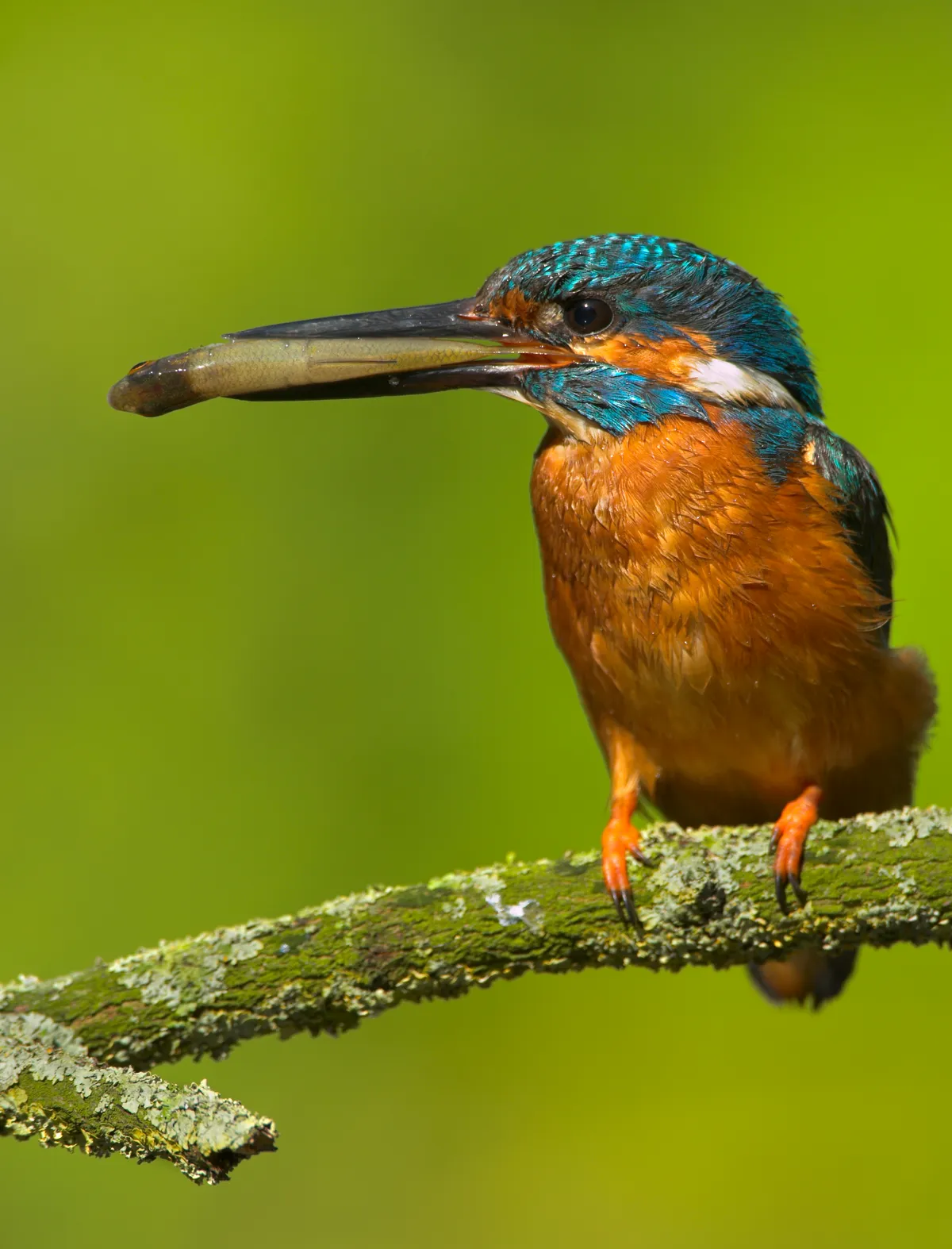
Are kingfishers territorial?
It is vital for kingfishers to hold a territory with enough food, particularly during winter. If their territory doesn't have an adequate food supply or becomes frozen over during winter, kingfishers may have to move out and find food elsewhere, bringing them into conflict with other kingfishers. Breeding pairs will usually share territories during the summer.
Are kingfishers found in urban areas?
Thanks to improving water quality within our rivers and lakes, populations of small fish, including minnows and sticklebacks, have been flourishing. This has allowed kingfishers to move into some more urban areas, including central London.
Do kingfishers ever visit gardens?
Despite not being a typical garden bird, if you have a pond and live near a larger waterway, you may be lucky enough to attract kingfishers into your garden. They will even come to bird tables in particularly harsh winters when the water freezes over, and have been known to take offal, suet and even bread.
Where do kingfishers nest and when do they breed?
Kingfishers nest in burrows, usually in soft riverbanks. The nest tunnels can be up to 140cm long, ending in a nesting chamber, and can take many days to create. Despite this, they have up to three broods a year and will use a different nest each time as, once the young have fledged, the tunnel is usually full of decomposing fish!
Pair formation begins in February, and the eggs of the first clutch are laid in March-April. 6-7 eggs are usually laid, and are incubated by both the male and female. After 19-21 days of incubation, the chicks hatch out of the eggs.
Chicks can eat up to 18 fish each per day, and they are fed in rotation by the parents. The chicks normally leave the nest when they are 24-25 days old, but can take up to 37 days if the fish supply is poor.
The fledglings are fed for only four days and then driven out of the territory by the parents, who then begin their next brood. It is estimated that only half of fledglings survive more than a week or two, and very few birds live for more than one breeding season.
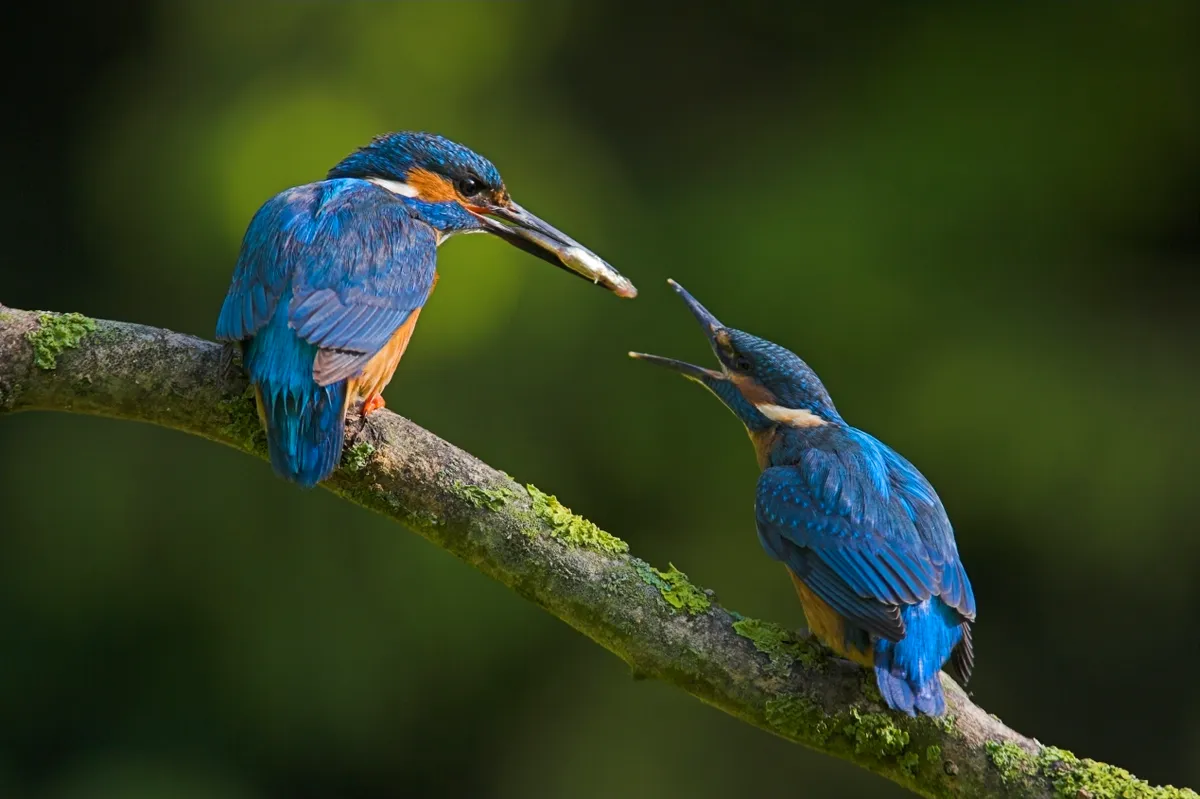
How does a kingfisher dig out a nesting burrow? We asked Mike Toms from the BTO:
For a small bird such as a kingfisher, digging out a nesting burrow that can be up to 130cm in length is a Herculean task.
A pair works on the burrow together, choosing a steep or vertical bank situated over water.
The male starts things off by flying at a spot on the bank and attempting to loosen the soil with his beak. These initial attempts can be haphazard, but once the birds have removed sufficient soil to gain a foothold, they can more easily perch and peck at the soil in a woodpecker-like manner.
Work continues on and off throughout the day, with the pair taking it in turns to dig and with the excavating bird always watched over by its mate.
The tunnel is just 5cm wide, so a bird has to reverse out, kicking the soil backwards with its feet. Only when a kingfisher exits head- first does it mean the job is nearly finished and the nesting chamber is taking shape.
The whole process takes a couple of weeks, so it is little wonder that nesting burrows are often used again the following year.
Kingfishers in folklore
In days gone by, there used to be an unpleasant custom that involved people killing kingfishers and hanging their bodies on a string outside a house. The theory was that the kingfishers’ beak would point in the direction that the weather was moving in, acting as a weather vane.
What happens to kingfishers during cold winters?
Due to the lack of food during harsh winters, kingfishers can suffer severe mortality and population crashes. However, they can recover quickly as they have up to three broods per season and up to six chicks per brood. They are still listed as an Amber species due to their status across Europe.
How to telling the difference between a male and female kingfisher
Kingfishers are usually seen as a flash of blue in flight. If you are lucky enough to see one perching you will notice the orange-red plumage underneath and their dark, dagger-like bill. Females and males can cautiously be told apart, as females have a reddish base to their lower mandible.
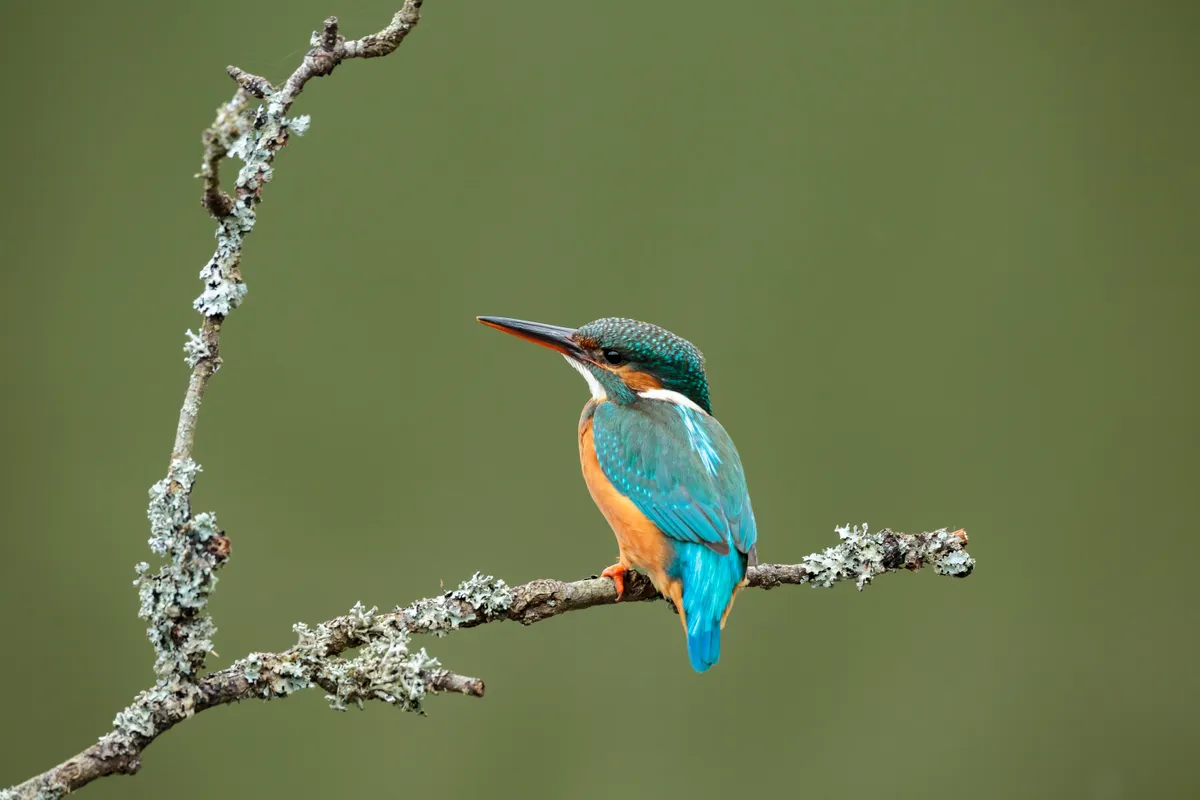
How do kingfishers excavate their nesting burrows?
Ornithologist Mike Toms discusses how kingfisher pairs work together to dig their nesting burrows.
For a small bird such as a kingfisher, digging out a nesting burrow that can be up to 130cm in length is a Herculean task.
A pair works on the burrow together, choosing a steep or vertical bank situated over water.
The male starts things off by flying at a spot on the bank and attempting to loosen the soil with his beak. These initial attempts can be haphazard, but once the birds have removed sufficient soil to gain a foothold, they can more easily perch and peck at the soil in a woodpecker-like manner.
Work continues on and off throughout the day, with the pair taking it in turns to dig and with the excavating bird always watched over by its mate.
The tunnel is just 5cm wide, so a bird has to reverse out, kicking the soil backwards with its feet. Only when a kingfisher exits head- first does it mean the job is nearly finished and the nesting chamber is taking shape.
The whole process takes a couple of weeks, so it is little wonder that nesting burrows are often used again the following year.
Best places to see a kingfisher in the UK
BBC Wildlife's former features editor Ben Hoare shares his pick of the best places to spot kingfishers in Britain.
To spot kingfishers, patience and planning are key. They are actually widespread and fairly common in Britain, though scarcer in Scotland. But despite this, they can often be elusive birds.
Going for a stroll by the water is not the best strategy for a kingfisher sighting. Instead it is a good idea to wait in a hide or among bankside vegetation. At some nature reserves you can even see these lovely birds from the windows of the main visitor centre.
Kingfishers also give themselves away with their ‘peep peep’ call. Listen out for this high-pitched piping – and quickly scan in all directions if you hear it. Birds often call in alarm or as they are flying past, low over the water.
Kingfishers love clear, still or slow-moving water with reeds or bulrushes in the shallows. They also love to perch in overhanging willows or alders on the banks, where they preen their plumage or dive for fish. They are often spotted where drainage ditches, culverts or streams join a larger waterway.
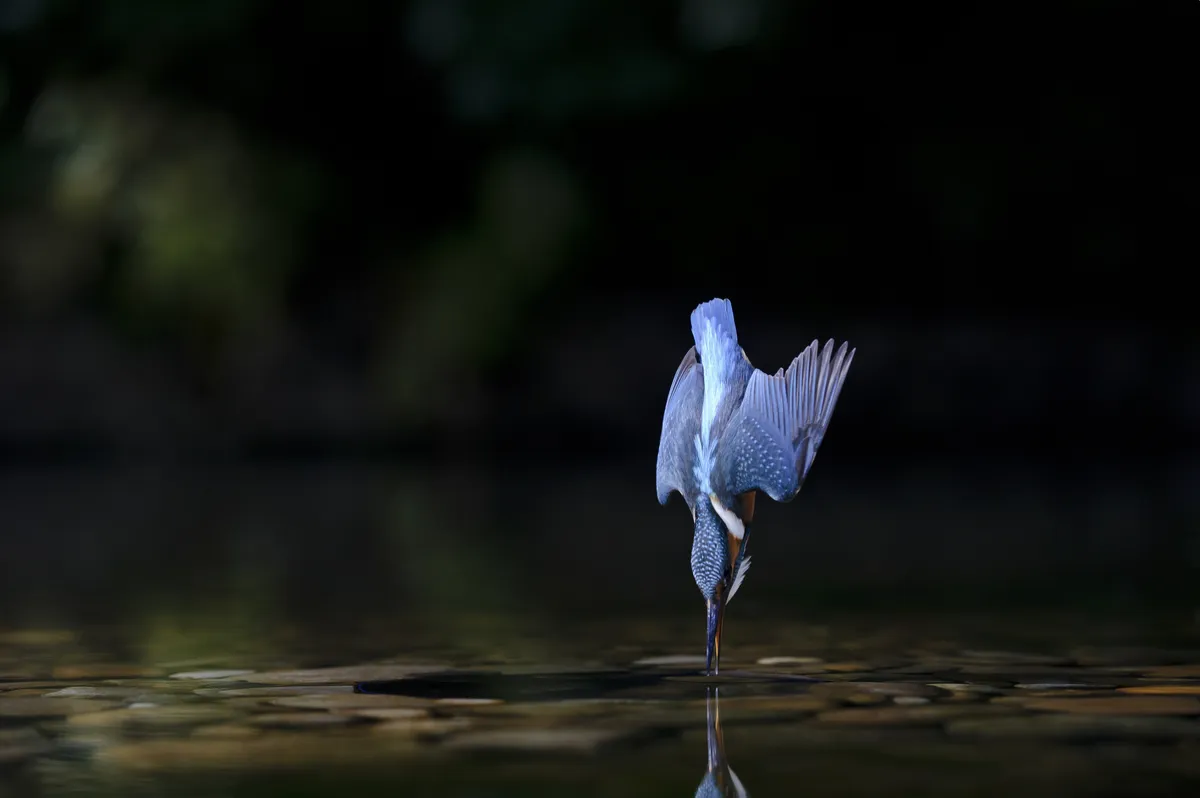
Many British rivers, canals, streams, lakes and gravel pits have kingfishers, even in urban areas. Here we have picked 10 of the best nature reserves for a sighting – but plenty of other wetland reserves have kingfishers too.
Legal note
Kingfishers are a vulnerable species due to their low breeding number and habitat loss. Consequently they are protected by law, and afforded Schedule 1 status under the Wildlife and Countryside Act 1981. This means an official licence is required to photograph them at or near the nest where there is a risk of disturbance.
For details of how to apply, contact Natural England www.naturalengland.org.uk or Scottish Natural Heritage www.snh.gov.uk.
Attenborough Nature Reserve, Nottinghamshire (Nottinghamshire Wildlife Trust)
RSPB Fowlmere, Cambridgeshire
Lackford Lakes, Suffolk (Suffolk Wildlife Trust)
WWT London Wetland Centre
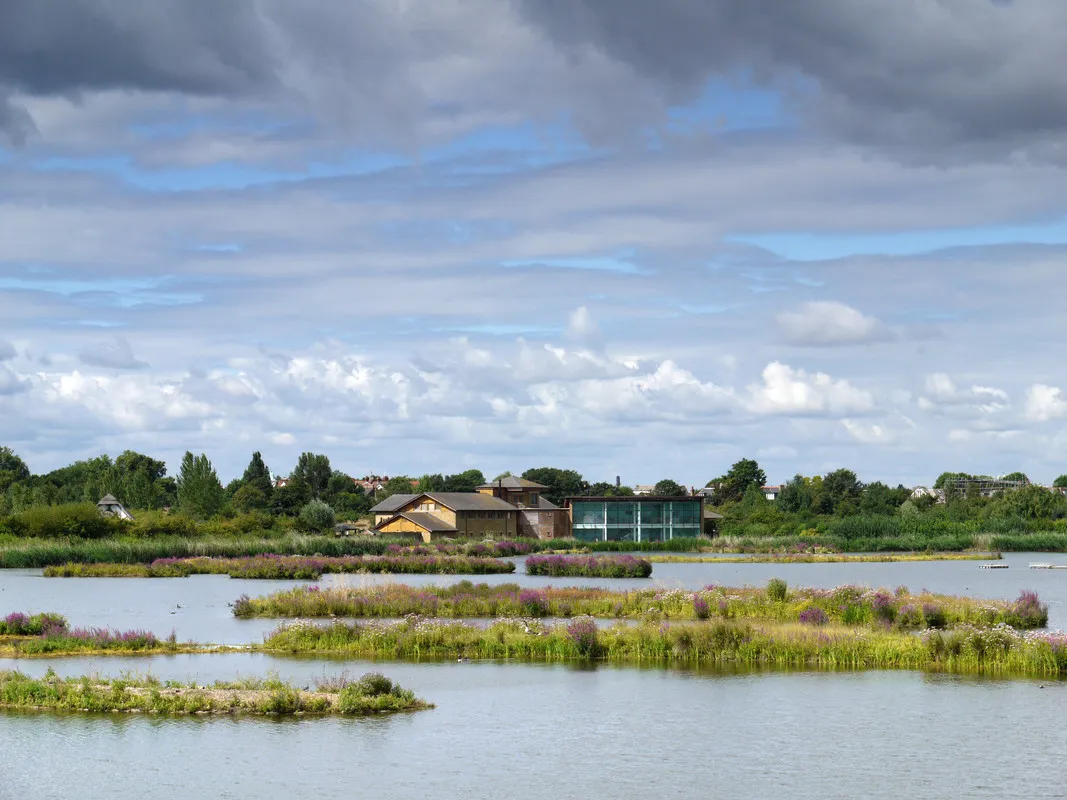
Mere Sands Wood, Lancashire (Lancashire Wildlife Trust)
RHS Wisley, Surrey
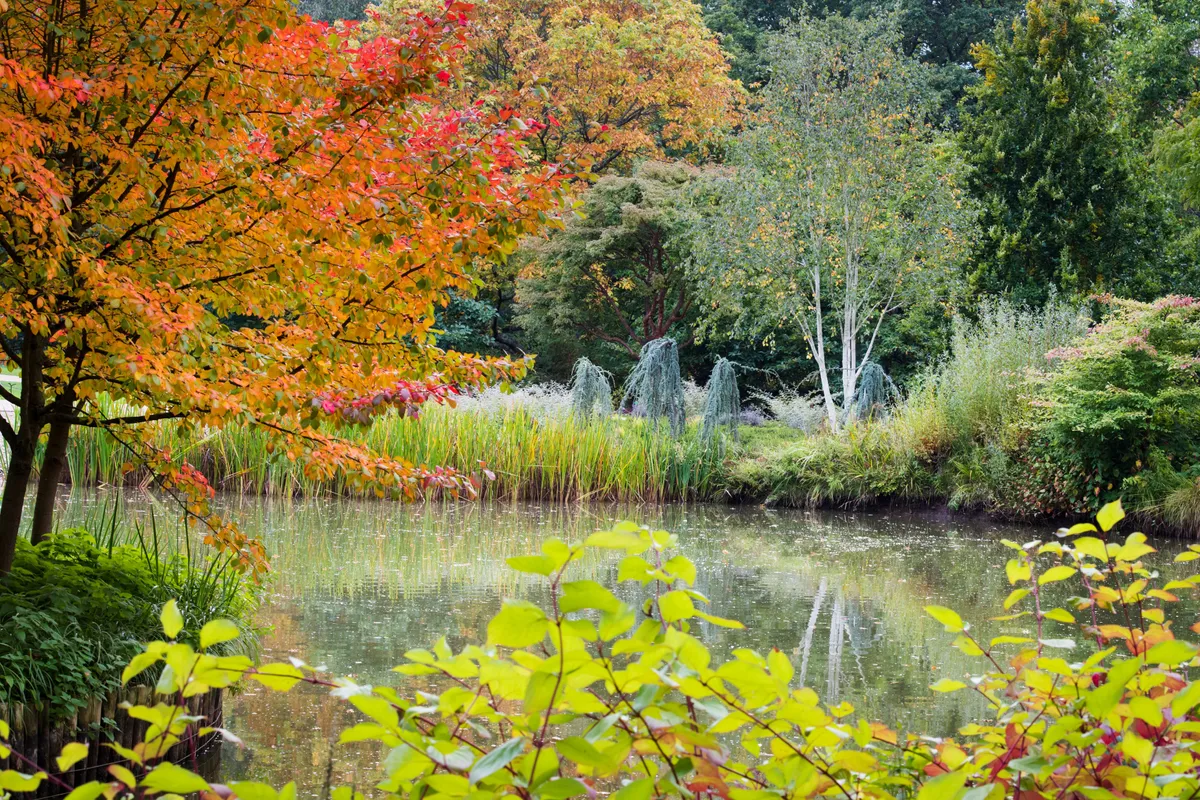
Located south of London in Surrey, Wisley is one of four gardens run by the the Royal Horticultural Society and full of inspirational areas, such as Seven Acres (pictured above), Oakwood, and Mixed Borders.
RSPB Rye Meads, Hertfordshire
Staveley Nature Reserve, Yorkshire (Yorkshire Wildlife Trust)
RSPB Strumpshaw Fen, Norfolk
Tophill Low and Potteric Carr (Yorkshire Wildlife Trust)
BBC cameraman John Aitchison reveals how to film breathtaking footage of a kingfisher
Find your kingfisher
Bridges are excellent viewpoints from which to scan large areas of river for local birds. Listen out for the kingfisher’s piercing call and look for the flash of its electric blue rump as it hurtles by. Once you’ve located your subject, the priority is to get close enough to secure the perfect footage – just make sure that the landowner is happy for you to be there.
Follow the fish
Kingfishers feed on small fish, such as minnows, and don’t dive to great depths. This makes it easy to spot their feeding places from the riverbank. Scout out areas where the water is moving slowly – perhaps on the inside of a river bend, by a fallen tree or behind a rock – all places where fish gather. Kingfishers can’t swim, so they tend to avoid turbulent waters.
Get the timing right
Kingfishers stay on their breeding sites all year (they do migrate to the coast in harsh weather, but the shift to milder winters is making such movements less frequent). As a result, the species can usually be filmed in the same territory in every season. Your chances of success are highest in spring and summer when adults have young.
Set the scene
Once you get close to a kingfisher’s regular fishing perch, you should be able to predict where the bird will hit the water when it dives. It will usually bring fish back to the perch, quickly stunning them before swallowing its meal whole.
STEP BY STEP: HOW TO SET UP A KINGFISHER FILMING STATION
1. Choose your site
Tread softly and move slowly when you look for a place to set up your camera, so as not to disturb the fish. Crouch down and stay still for a while – any wary minnows will probably return to their favourite stretch of water.
2. Provide a perch
Though kingfishers can hunt while hovering, it’s hard work. You can make life much easier for them by providing perches. The birds should become frequent visitors to these posts once they know where to find them.
3. Get in close
Kingfishers are surprisingly confiding birds and have been known to perch on fishing rods when anglers are only a few metres away, so you can afford to set up your equipment near to the makeshift perch.
4. Watch and wait
Try to keep movement to a minimum once you’re in position. You may well be there for several hours, so make yourself nice and comfortable. When you need to move your hands, to focus the lens for instance, do it slowly.
5. Be persistent
It may take a while for a kingfisher to get used to the perch, but the footage you get when it does will be well worth the wait. If your chosen location produces no results, try again on a different stretch of riverbank.
Essential equipment
- Camo net: To blend in with the riverbank, drape yourself and your camera gear in a camouflage net. You could also put a layer of scrim over your face. Both are available from government surplus shops.
- Gloves: It’s a good idea to wear dark-coloured gloves, because moving fingers are the most conspicuous part of your body.
- Folding stool and cushion: Comfort is vital on stakeouts, and a padded stool will help to keep you relaxed and alert during long hours spent filming.
